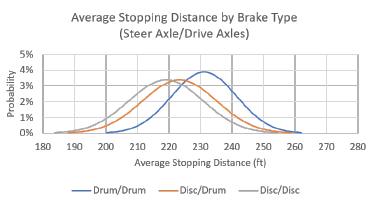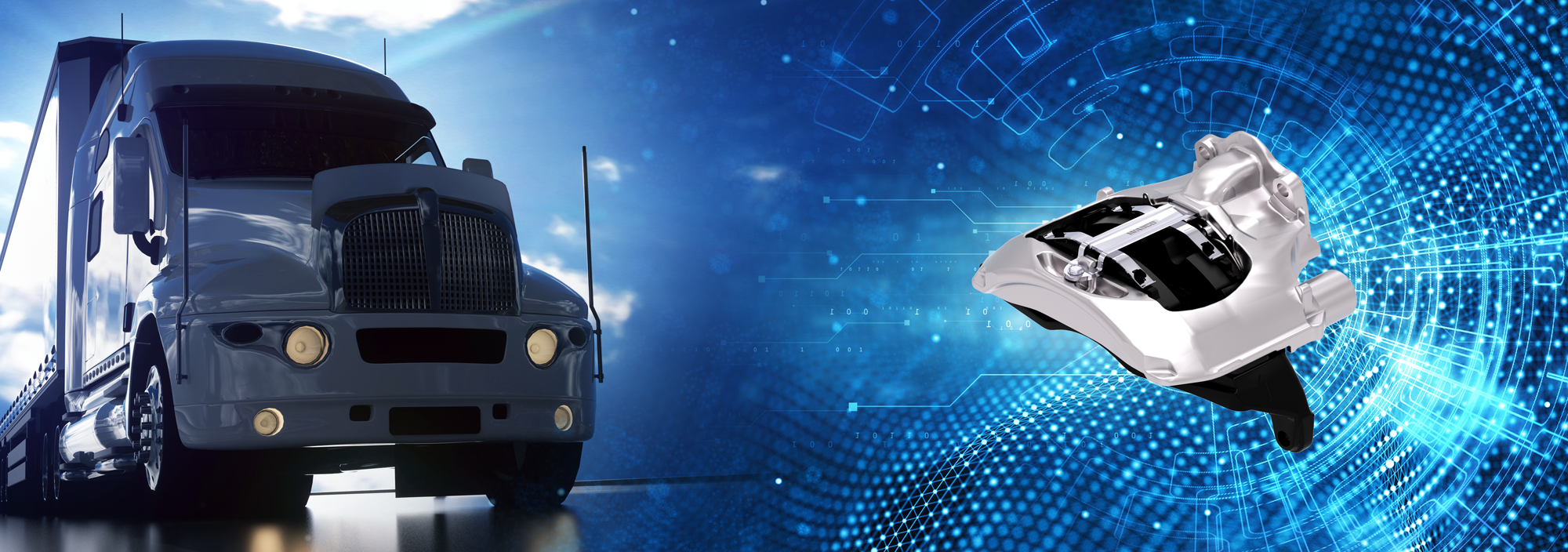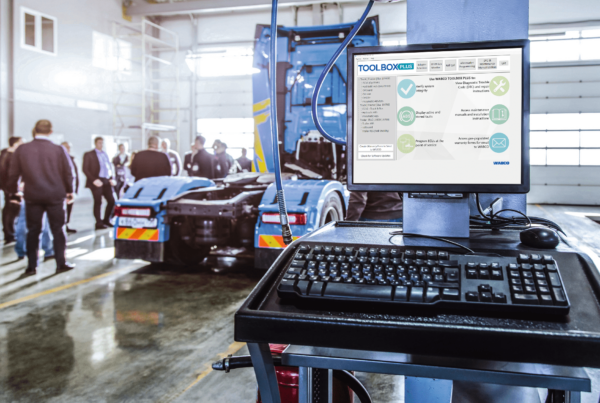What do you want your heavy truck's brakes to do? How do you measure their value? You want them to stop. And the more efficiently they stop, the greater their value.
Stopping Distance

Drum brakes are the traditional choice of some fleets because of familiarity with that brake system and a perceived cost advantage. ADB system technology, however, has driven greater adoption of ADBs industry-wide because of important advantages throughout the brake lifecycle. But let’s start with – stopping.
A study published by the Federal Motor Carrier Safety Administration (FMCSA)1 analyzing the variability of heavy truck braking systems found that the average stopping distance for disc/disc configuration of brakes (meaning, disc brakes on both the steer axle and drive axles) was shorter than either drum/drum or disc/drum brake configurations. Therefore, performance as measured by stopping distance favors ADBs. There are other advantages as well.

Drum brake systems are a fully closed design. As drum brake systems heat up, particularly during heavy braking, they are prone to brake fade – a reduction in performance due to expansion of the drum away from the brake shoe friction. In contrast, ADB technology, which uses a disc that is fitted with a caliper to stop the rotor, virtually eliminates brake fade. Since the rotor is exposed to outside air, it cools quickly, decreasing the tendency to overheat and cause fading.
As noted in FMCSA study, any brake life cycle varies due to many factors including road conditions, the average load of the vehicle, the terrain traveled – flat or hilly, and even the driver’s skill level. But in comparable circumstances and conditions like those presented in the study, ADBs offer two important advantages – shorter stopping distance and more efficient heat transfer in the act of braking.
How Does Value Relate to Performance?
That brings us back to the discussion of how does value relate to performance? In comparing the stopping performance of drum brake systems to ADB technology, the [stopping] performance advantage goes to ADBs.

And an even greater advantage is available with ZF ADB technology – WABCO MAXXUS™ 2.0. Its single-piston design makes it the lightest truck ADB on the market. It also offers comparable output force to double-piston technology, better heat management – which results in longer brake life, less grab and pull, and greater stopping power and a 10% shorter stopping distance than the FMVSS requirement.
How do I define value regarding my heavy truck braking systems?
So, stop and consider the question; “how do I define value regarding my heavy truck braking system?” Thoughtful consideration, based on performance and comparative data, makes ADB technology the answer.
Next: ADBs deliver advantages and value throughout the commercial trucking ecosystem – in safety, overall performance and driver comfort and confidence. Next time we’ll talk about what that can mean to you.



